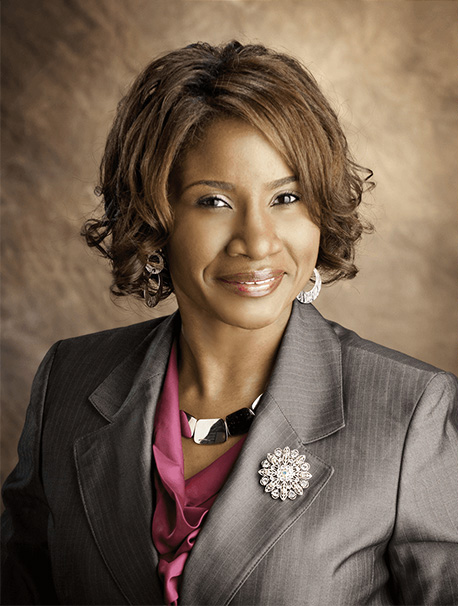The Current Expected Credit Losses (CECL) standard has been in effect for nonprofits since 2023, with most organizations having completed their initial implementation. As we move through 2025, CECL post-implementation focus has shifted from adoption to ongoing compliance, model refinement, and process optimization. Understanding what comes next requires examining lessons learned from nonprofit implementations and establishing frameworks for sustained success.
Current Implementation Landscape for Nonprofits
Nonprofit organizations have navigated the transition from incurred loss models to expected loss methodologies, following FASB guidance throughout the process. Unlike financial institutions, nonprofits face unique challenges with diverse revenue streams including grants, pledges, program fees, and investment income that require different approaches to credit loss estimation.
Nonprofits deal with receivables that differ significantly from traditional loans, including unconditional promises to give, conditional grants, and program service fees. Each requires tailored loss estimation approaches that consider donor behavior, foundation priorities, and government funding cycles.
Recent audits show that nonprofits generally made good faith efforts in adopting CECL, though findings continue to emerge around documentation standards and governance frameworks. The focus has evolved from basic compliance to assessing ongoing adequacy of credit loss models within the nonprofit context.
CECL Post-Implementation Lessons for Nonprofits
Data availability emerged as the most significant challenge, with many nonprofits discovering incomplete historical credit loss information across different revenue streams. Organizations that invested early in data collection systems and established clear protocols for tracking pledge defaults and grant recoveries experienced smoother implementations.
Donor relationship management represents a unique consideration for nonprofits. Organizations with robust internal controls and clear documentation standards have demonstrated better compliance outcomes, as outlined in Federal Reserve guidance. The importance of collaboration between development, finance, and program teams has become evident, as CECL requires expertise across multiple functional areas.
Economic forecasting presents particular challenges for nonprofits whose funding sources may not correlate with traditional economic indicators. Organizations have learned that maintaining flexibility in forecasting approaches allows better adaptation to changing donor behavior and funding cycles.
Board governance required adjustment as nonprofit boards needed education on CECL requirements and fiduciary responsibilities for overseeing credit loss estimates. Organizations with engaged audit committees that understand nonprofit revenue recognition have shown better oversight outcomes.
Ongoing Compliance and Monitoring Requirements
Post-implementation CECL compliance extends beyond initial adoption, requiring adherence to current standards. Nonprofits must establish ongoing monitoring frameworks that track model performance across different revenue types, validate key assumptions, and ensure continued compliance.
Grant compliance adds complexity, as some funding sources have specific financial reporting requirements that intersect with CECL calculations. Organizations must ensure their credit loss estimates align with both GAAP requirements and grantor expectations.
Best Practices for Sustained Success
Successful CECL implementation for nonprofits requires more than meeting minimum compliance requirements. Organizations achieving optimal results have established governance frameworks that include regular model validation and process improvements, following industry best practices. These entities maintain documentation of methodologies and key judgments while considering the unique nature of nonprofit operations.
Revenue stream segmentation represents a critical area where ongoing refinement yields benefits. Organizations regularly evaluate their pooling strategies to ensure receivables with similar risk characteristics remain appropriately grouped. Changes in donor demographics, grant-making trends, or program delivery methods may warrant adjustments to risk pool definitions.
Staff training and knowledge management have proved essential for maintaining effective CECL processes within resource-constrained environments. Organizations with clear responsibility assignments and cross-training protocols demonstrate better consistency and accuracy. Regular training ensures staff remain current with evolving guidance while building internal expertise.
Donor stewardship considerations influence how nonprofits approach credit loss estimation, as organizations must balance realistic loss expectations with maintaining positive donor relationships.
Post-Implementation Considerations for CECL Success
The CECL landscape continues evolving as economic conditions change. Nonprofit organizations must remain prepared to adapt their models to reflect new information about donor behavior, foundation funding patterns, and government budget priorities.
Audit scrutiny has become more sophisticated as auditors gain experience with nonprofit CECL implementations. Organizations can expect increased focus on model governance and calculation accuracy. Maintaining comprehensive documentation and demonstrating sound processes remain essential for successful outcomes.
Industry collaboration through nonprofit professional organizations provides valuable insights for ongoing model refinement. Organizations participating in accounting forums report better awareness of emerging practices specific to the nonprofit sector.
Moving Forward with Confidence
The post-implementation phase represents an opportunity for nonprofits to optimize their credit loss estimation processes and strengthen financial management capabilities. Success requires ongoing attention to data quality, model governance, and staff capabilities within nonprofit operational constraints.
Regular assessment of model performance and process effectiveness ensures CECL calculations remain accurate and supportive of organizational decision-making. Organizations with proactive approaches to model monitoring demonstrate better compliance outcomes and reduced audit risk.
Contact us today to learn how we can help enhance your nonprofit’s CECL compliance and ongoing monitoring processes. Our experienced team understands the unique challenges facing nonprofit organizations and provides professional guidance on model validation, documentation requirements, and governance best practices tailored to the nonprofit sector.

Jo-Anne Williams Barnes, is a Certified Public Accountant (CPA) and Chartered Global Management Accountant (CGMA) holding a Master’s of Science in Accounting (MSA) and a Master’s in Business Administration (MBA). Additionally, she holds a Bachelor of Science (BS) in Accounting from the University of Baltimore and is a seasoned accounting professional with several years of experience in the field of managing financial records for non-profits, small, medium, and large businesses. Jo-Anne is a certified Sage Intacct Accounting and Implementation Specialist, a certified QuickBooks ProAdvisor, an AICPA Not-for-Profit Certificate II holder, and Standard for Excellence Licensed Consultant. Additionally, Jo-Anne is a member of American Institute of Certified Public Accountant (AICPA), Maryland Association of Certified Public Accountants (MACPA), and Greater Washington Society of Certified Public Accountants (GWSCPA) where she continues to keep abreast on the latest industry trends and changes.

